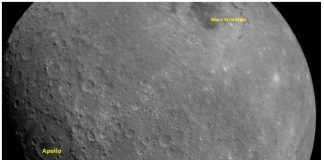OCTOBER 26, 2023

In a groundbreaking discovery, seismic waves generated by a meteorite impact on Mars have provided scientists with new insights into the Red Planet’s deep interior.
The data, collected by Nasa’s InSight lander, has led to a significant reassessment of the planet’s internal structure.
The seismic data reveals an unknown layer of molten rock encircling a liquid metallic core, which is smaller and denser than previously estimated. This discovery was made possible by the unique ability of seismic waves to change speed and shape when traversing different materials within a planet.
The meteorite impact that triggered this revelation occurred in a Martian highland region called Tempe Terra on September 18, 2021. Despite being located on the opposite side of Mars from InSight’s location in Elysium Planitia, the impact caused a magnitude 4.2 quake and left a crater about 425 feet wide.
“The importance of the far side impact was to produce seismic waves that traversed the deep interior of the planet, including the core,” said planetary scientist Amir Khan of ETH Zürich in Switzerland.
Prior to this, seismic waves reflecting off the top of the core had been observed, but none had transited the core.
The behaviour of these waves indicated the presence of a molten silicate layer, approximately 90 miles thick, surrounding the core. This molten region sits at the bottom of the mantle, the rocky layer between the planet’s outermost crust and core.
The researchers also recalculated the size of the core, finding it to be about 30% smaller in volume than previously thought, with a diameter of about 2,080 miles.
Unlike Earth, Mars has a molten layer around its core, which is composed mostly of iron and nickel, along with lighter elements such as sulfur, oxygen, carbon, and hydrogen. These lighter elements make up about 9-15% of the core’s composition by weight, lower than previous estimates.
“Mars is a rich and complex system where many different types of processes coexist and act on various spatial and temporal scales,” said Henri Samuel, a planetary scientist with the French national research organization CNRS. “We have learned a lot about Mars by studying the unique seismic record provided by the InSight mission.”
Nasa retired InSight in 2022 after four years of operations, but its legacy continues to provide valuable insights into our neighboring planet’s intriguing interior.
Courtesy: India Today / PTI








































































































